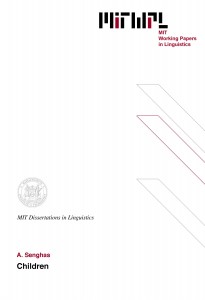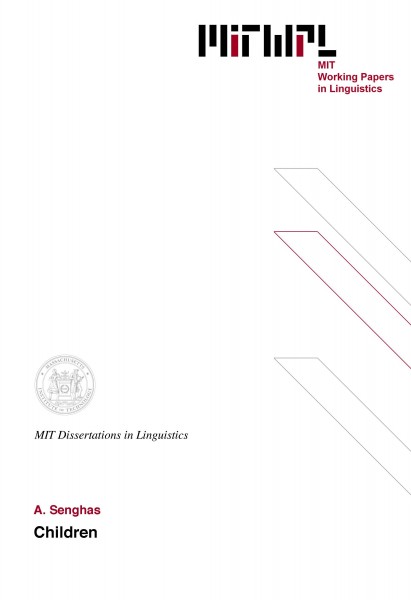Children’s Contribution to the Birth of Nicaraguan Sign Language
A. Senghas, 1995
Copyright
Copyright © 1995 by MIT working papers in linguistics
Tags
Type: #dissertation
Subfield: #psycholinguistics #sign_languages
Languages: #Nicaraguan_Sign_Language
Topics: #acquisition #sign_languages
Description
"The present study examines children's ability to create grammatical structure. A new language has emerged in the hands of a generation of deaf children in Nicaragua. This study examines some of the specific constructions that have emerged in this new signed language in order to determine whether the language is indeed changing over time, and whether the changes in the language originate in older or younger signers.
A nonverbal cartoon was presented to deaf Nicaraguan signers to elicit topic-controlled narratives. Morphological differences between the narratives were examined with respect to the signers' Age at Entry into the signing community, and the signers' Year of Entry into the signing community.
The age at which signers first enter the Nicaraguan signing community predicts their ultimate ability to command some of its more complex structures. Signers who arrived at a young age produce more complex, multi-morphemic signs and use the inflectional and verb agreement system more than signers who entered the community at an older age. These findings are consistent with theories that claim that children's language-learning abilities decrease with age.
When the effect of Age at Entry is controlled for, a higher prevalence of these same complex constructions among signers with a later Year of Entry indicates a richer signing environment at the time of learning, thus demonstrating that the language has become more complex over recent years.
This effect of Year of Entry is present only in the signers who entered the community under the age of ten. Thus, the new developments in the language originate in the youngest children in the community. As they apply their natural language acquisition capacity to the nonnativized, incomplete input that surrounds them, they generate a rich and structured grammar, which become measurably richer with each passing year."
The committee
- Thesis supervisor
- Steven Pinker, Professor of Brain and Cognitive Sciences

